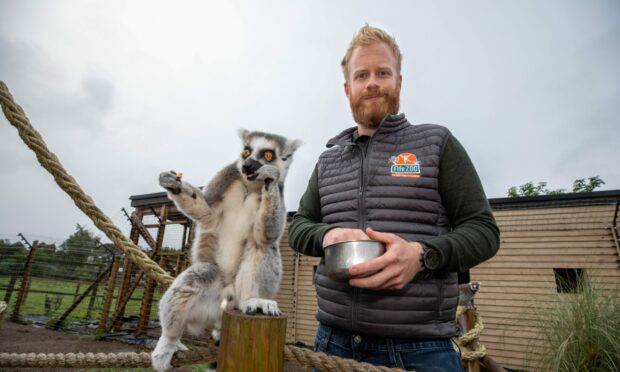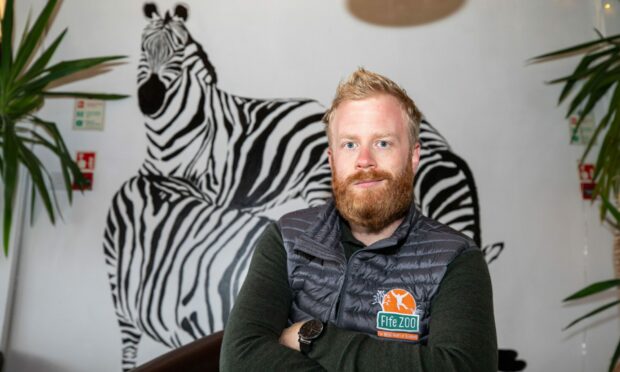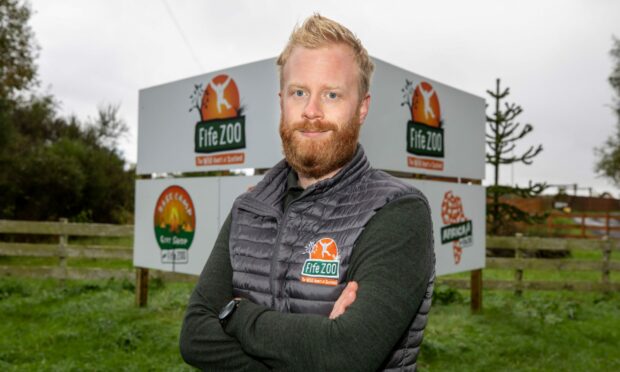Bosses at Fife Zoo are confident of a bright future at the tourist attraction, despite being hit by two fires and the Covid-19 pandemic.
It was July 2019, when Fife Zoo was opened by directors Mike Knight, his business partner Briony Taylor and Mike’s parents, Ann and Reg Knight.
A year later, it was hit by a devastating fire.
And a second fire ripped through Fife Zoo last year, just six days after it reopened as coronavirus lockdown restrictions eased.
The site, now back open, is home to more than 40 animals from 10 different species such as meerkats, ring-tailed lemurs, Grevy’s zebras and De Brazza’s monkeys.
It also has six banded armadillos and crested porcupines as well as various invertebrates like Madagascan hissing cockroaches, Saba stick insects and Asian forest scorpions.
Visitor numbers are reported to have been steady for 2021, with over 17,500 people passing through the doors from March to October.
However, he operation has been hit by two fires as well as the Covid-19 pandemic.
But a bright future is still on the horizon.
A bright future ahead
The directors were not all complete novices – Mike and Briony previously worked at other zoos in the south of England.
So what was the opportunity the directors saw?
Mike said: “We looked at a few sites across the UK, but struggled with planning permission.
“We then started looking further afield and found the current site.
“It already had some existing infrastructure, a restaurant, car park, etc, so we could focus most of our efforts in the zoo itself.”
So did anyone think it was a crazy venture?
Mike said: “Lots, but I was confident that we had done all the appropriate due diligence.”
Starting Fife Zoo an expensive project
Starting the zoo did not come cheap.
Mike’s parents invested £525,000 from the sale of their home in Essex. There was another £250,000 of bank funding.
Wildlife conservation and education are the backbone of the zoo, Mike said.
“We support conservation breeding programmes for the species who live at the zoo, and we also raise funds for conservation projects in the UK and abroad,” he added.
“Our conservation and wildlife message is top priority, achieved by delivering excellent animal care and education standards.”
As well as its directors, the zoo has 10 staff.
The impact of Covid-19 on Fife Zoo
The zoo got off to a promising start, with nearly 15,000 visitors in the second half of 2019.
But the arrival of Covid-19 on these shores had a huge impact.
Mike said: “Our developments stopped overnight. The zoo’s development fund became a Covid survival fund.
“We could not just lock the doors and wait it out.
“It costs us around £1,200 per month just to feed the small collection of animals.
“We received £10,000 rates relief.
“We were able use the furlough scheme and make use of deferred VAT, but other than that we received no other government funding.
“Public donations in all forms were a huge support in looking after the animals at the zoo.
“We received a lot of financial donations, which went directly towards caring for the animals and paying the energy bills, as well as donations of other products like hay, straw, and bedding.”
The zoo is financed by revenue generated through ticket sales, so it was a relief when the doors opened again in March this year.
During off-peak days, the zoo expects around 50 visitors on average, but at peak times there could be 400 visitors per day.
The five-year plan for Fife Zoo
So where does he expect the zoo to be five years from now?
Mike said: “We would expect to have completed the majority of the work we have planning permission for and be planning the next stage of development.
“The next phase will be predominantly South American.
“They include areas of pantanal and rainforest, including South American tapir, howler monkeys and some South American carnivores.”




